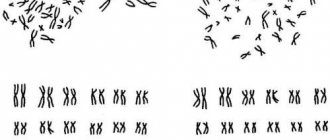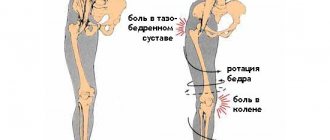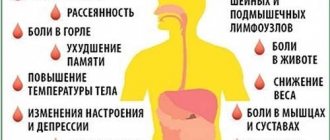Patau syndrome - symptoms:
- Skull deformation
- Low weight
- Foot deformity
- Deafness
- Mental retardation
- Narrow palpebral fissure
- Mental development disorder
- Reduced penis size
- Retarded physical development
- Duplication of genital organs
- Missing one eye
- Increasing the number of fingers
- Short neck
- Testicle in the abdominal cavity
- Bilateral cleft palates
- Reduced brain volume
- Bilateral clefts of the upper lip
- Skin blemishes on the back of the head
- Low positioned ears
What is Patau syndrome
Patau syndrome is a genetic anomaly, which is characterized by the presence in a child of numerous defects in the structure and functioning of organs and systems, the brain and the musculoskeletal system. The occurrence of such a disorder is caused by the presence of a spare thirteenth chromosome. The disease is characterized by defects in the central nervous and cardiovascular systems, organs of vision and hearing, the muscular system (the presence of a cleft lip), and pathologies in the structure of the reproductive system.
- Etiology
- Symptoms
- Diagnostics
- Treatment
- Prevention
To diagnose this disease, a baby's karyotype is examined immediately after birth. There are techniques for detecting this disorder in a fetus inside the womb. This is done using ultrasound - specific manifestations are observed starting from the twelfth week of pregnancy. The disease occurs equally in both boys and girls. In terms of prevalence, the disease is second only to Down syndrome - one baby in ten thousand is born with this disorder. There are no special methods for treating and eliminating this syndrome. The only thing doctors can do is correct congenital pathologies.
A genetic disease such as Edwards syndrome has approximately similar external manifestations and diagnosis. The main difference is in the karyotype - the eighteenth chromosome does not consist of three parts, as it should normally be, but of two.
Symptoms and signs of diseases
There are certain symptoms during pregnancy:
- Shortened pregnancy time - 38.5 weeks;
- Miscarriage;
- Polyhydramnios;
- Stillbirth.
As for newborns with SP, they have certain symptoms:
- Hypoplasia, expressed by underdevelopment;
- Low body weight;
- Congenital defects;
- The structure of the skull and hands is damaged;
- Problems in the development of the central nervous system;
- Coloboma;
- Vision problems;
- Large buds;
- Anomalies in the development of the genital organs.
Thus, during pregnancy it is already possible to determine the main symptoms of the child’s disease.
Causes of Patau syndrome
The main cause of occurrence is a disorder of chromosome divergence during cell division of one of the parents. Predisposing factors to the progression of such a karyotype disorder are:
- maternal age – there is a high probability of having this genetic disorder in children born to mothers over forty-five years of age;
- genetic predisposition. One of the parents has a pathology such as Robertson's karyotype. Outwardly, such people look healthy with a normal set of chromosomes, only they, for unknown reasons, give birth to children with Patau or Edwards syndrome;
- sexual contacts between relatives;
- high degree of environmental pollution.
Errors in the formation of sperm and eggs, which are directly involved in conception, cannot be ruled out. But this reason cannot be corrected or predicted, since it is a completely random factor.
Karyotype of Patau syndrome photo.
Trisomy 13: forms of the disease
When the presence of a third is diagnosed in a pair of chromosomes, this is the cause of Patau syndrome.
In general, there are several forms of a disease such as trisomy:
- Simple is when three chromosomes instead of two, belonging to the same species and freely present in the body, can realize the genetic potential.
- There is a form of Robertsonian translocation, in which two chromosomes are free cells, and the third adheres due to long arms with an acrocentric chromosome. This pathology can most often be found in chromosomes 14 and 21. That is why the rRNA gene is diagnosed in the acrocentric chromosomes in the cavity of the short arms, which is duplicated many times in the karyotype, but does not affect functionality.
The karyotype of a patient with this syndrome on the third chromosome can be determined by the formula 47 XX (XY) 13+. In especially rare cases, doctors are able to diagnose the presence of such forms of trisomy 13 as non-Robertsonian translocation, isochromosomal and mosaic.
Symptoms of Patau syndrome
Patau syndrome entails multiple disorders of both internal organs and systems, so the symptoms of the disease are divided depending on the location of the pathology. Signs of this disorder in terms of structural changes in the skull and skeleton are:
- the baby’s body weight is critically low – less than two kilograms;
- deformation of the skull – the child’s head is much smaller than the body;
- the location of the ears is much lower than in a healthy child;
- pronounced bilateral clefts on the palate and upper lip;
- palpebral fissures are significantly narrowed;
- in some cases there is an increase in the number of fingers on the upper and lower extremities;
- short neck;
- skin imperfections in the back of the head;
- irregular foot shape.
Symptoms of this disorder related to the nervous system:
- reduced brain volumes;
- underdevelopment or complete absence of some components of the brain, for example, the cerebellum;
- delay in mental, physical and mental formation of personality.
Signs of Patau syndrome, characterizing anomalies in the structure of vital organs:
- structural pathologies of the heart;
- changes in the normal volumes of large and medium-sized vessels;
- underdevelopment or duality of the ureter;
- neoplasms on the kidneys in the form of cysts;
- umbilical cord deformities, such as hernia;
- changes in the natural position of all organs.
Manifestation of such a karyotype disorder in the formation of the genital organs:
- underdevelopment – reduction in penis size;
- detection of a testicle in the abdominal cavity;
- duplication of the genital organs in girls, in particular the uterus or vagina.
Symptoms of Patau disease from damage to the organs of vision and hearing:
- possible lack of one eyeball;
- defects of the membranes of the eye and lens;
- complete deafness caused by irregularly shaped ears;
- congenital cataract.
Due to the presence of multiple congenital defects in children, the prognosis for them is quite sad - on average, 90% of infants will not live their first year of life completely. Only a sixth of children live to be five years old, and only three percent of the total live to be ten years old. In most cases, babies with Patau syndrome die inside the womb.
Patau syndrome photo.
Symptoms and signs
There are a number of complications that characterize the presence of this disease, and all complications are obvious:
- Polyhydramnios during pregnancy, with Patau disease it occurs in 50% of cases;
- The child also has congenital defects, including below normal body weight;
- Microcephaly, which is moderate in nature, may cause difficulties in the development of certain parts of the central nervous system;
- Some signs of the disease are obvious - for example, small narrow eyes and forehead, a small distance between them, a wide base of the nose;
- The shells of the ears in such children are subject to deformation; there is a cleft between the outer coat and the nose;
- Problems with the development of internal organs - heart, chronic gastric pathologies, hernia;
- If we talk about the kidneys, then in such children they are very large;
- Developmental delays occur - not only from a physical point of view, but also from a mental one;
An idiocy that is observed in surviving children, although usually sick children with such symptoms do not live long.
So, the signs are obvious, and you need to pay attention to them.
Diagnostics
An important role in the diagnosis of this karyotype disorder is played by the timely distinction of this disorder from other ailments with similar symptoms using prenatal examinations of the mother. For Patau syndrome it is absolutely the same:
- examination using ultrasound - malformations become noticeable starting from the twelfth week of pregnancy;
- establishment of a biochemical marker;
- calculating the risk of having a baby with this disease.
Those women who fall into the risk group described above are recommended to undergo examinations such as:
- biopsy of the embryonic membrane - this is carried out during the period from the eighth to the twelfth week of pregnancy;
- puncture of amniotic fluid - often the sample is taken from the fourteenth to the eighteenth week of gestation;
- study of blood from the umbilical cord - must be performed after the twentieth week.
The resulting fluids will be searched for violations of the thirteenth chromosome. Such studies are not abandoned in cases of fetal death - this will help prevent or prevent the occurrence of the syndrome in cases of repeated pregnancy. Additional diagnostic methods are:
- Ultrasound of all organs;
- CT scan of the brain;
- consultations with such doctors as an ophthalmologist, otolaryngologist, neurologist, pediatric surgeon, genetic specialist, endocrinologist.
Based on the results of an external examination, analysis of the course of pregnancy and the research results obtained, the newborn baby is given a final diagnosis - Patau or Edwards syndrome.
Diagnosis: trisomy 13
The history and biography of the specialist who identified this syndrome is rich in many achievements in the field of medicine and more, however, like Edwards syndrome and the like, Patau cannot be treated. Treatment can be carried out briefly and only in the form of providing actions that can support the vital functions of the patient’s body. To confirm or exclude this pathology, a number of diagnostic procedures must be performed.
Initially, an ultrasound scan and analysis of a special biological marker are required, through which the degree of likelihood of the formation of such a pathology in the fetus of the woman being studied is calculated. If there are pathologies, then the fair sex will be included in the risk group.
After this, an invasive diagnostic method is used:
- In the period of 8-12 weeks, a chorionic villus biopsy is performed.
- Between 14 and 18 weeks, a procedure called amniocentesis is performed.
- At 20 weeks you need to undergo cordocentesis.
It is imperative that specialists obtain biological material from the fetus, which allows them to find that very 13th chromosome. To do this, a karyotype analysis is carried out using differential staining of chromosomes or PCR diagnostics. If no pathologies were detected in the fetus during pregnancy, but the mother is at risk, then it is quite possible that they will be detected by a neonatologist during the postpartum period. Determination of a genetic abnormality usually occurs in the first month of life, as clinical syndromes and dermatographic changes appear.
Treatment of Patau syndrome
Due to the fact that karyotype disorder is characterized by chromosomal abnormalities, there is no specific treatment. Parents who decide to keep their baby will have to provide him with proper care and treatment for the rest of his life, which includes:
- carrying out plastic surgery to eliminate gaps in the palate and lip, and eliminate extra fingers;
- performing multiple surgical interventions to remove pathologies of internal organs;
- careful care, proper nutrition and constant monitoring of the baby;
- general strengthening measures to maintain the functioning of affected organs;
- limiting the child from contracting infectious or inflammatory diseases.
Babies with this karyotype pathology who remain alive after birth suffer from idiocy until their death and are completely disabled. If the cause of such an illness is a random factor, subsequent pregnancies can be successful. In cases where one of the future parents has Robertson's pathologies, the possibility of having a healthy baby is excluded.
Possible complications
Patau syndrome is a pathology that ends in early death. Most patients die during the first year of life, but there are isolated cases when patients reached the age of 10 years. The patient dies from complications of the disease: severe cardiopulmonary failure, various infectious lesions.
With Patau syndrome, there is a pronounced delay in mental and physical development. As a result of damage to the central nervous system, such patients are unable to live without outside care.
Prevention
Due to the imprecise etiology of the syndrome, there is no specific prevention, but there are several useful recommendations to avoid the birth of a baby with karyotype disorders:
- if possible, change the district, city or even country of residence;
- avoid any contact with chemicals;
- do not have sexual contact with close relatives. In cases where this does happen, do not give birth to the child;
- do not get pregnant after forty-five years.
If future parents do not know whether they are carriers of a genetic disorder, the best solution is to undergo consultation with a specialist in this field before conceiving a child, during the planning stage.











